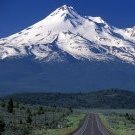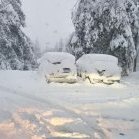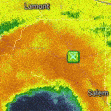All Activity
- Past hour
-
I think we can squeeze out a couple inches of rain this weekend.
-
More ridging in western Canada please and thank you.
-

Central PA Fall Discussions and Obs
canderson replied to ChescoWx's topic in Upstate New York/Pennsylvania
I also miss @Bubbler86 and hope he makes it back. He left when the thread got weird for a few weeks but that was curds year ago or so. His winter love and reporting was always exciting to read. - Today
-

Central PA Fall Discussions and Obs
Itstrainingtime replied to ChescoWx's topic in Upstate New York/Pennsylvania
I knew what his last post said. I haven't gotten it out of my mind since he posted. Horribly sad. -
Occasional Thoughts on Climate Change
frontranger8 replied to donsutherland1's topic in Climate Change
According to a lot of prognosticators in the 1990s, 2000s, and 2010s, we passed the point of no return quite awhile ago. -
Now at 4.34" for the month. Crushing the October record.
-

2025-2026 ENSO
Stormchaserchuck1 replied to 40/70 Benchmark's topic in Weather Forecasting and Discussion
March has a high -PNA/-NAO and +PNA/+NAO correlation.. wedges the SE ridge to near neutral. This is definitely a pattern though.. the lack of benchmark storms is because 80% of our Winter months have been -PNA since 2018 But there is a strong, strong correlation with US Temps and the SOI pre-1948. I suggest you check it out. I was only calling what I saw as SE ridge/NW trough -PNA, without looking at the North Pacific H5 (no data before 1948). It is possible the total composite of the 1948-2020 dataset is not big enough, if that is possible. Late 1800s - 1950, the SOI indicating a La Nina/El Nino was strongly correlated to Winter US Temperatures. -
From what I can see, no relevance for Dec, Feb, Mar for East Coast temps where it snows / where nor'easters are important. For the alarmists out there you can make the case whatever importance that was there in January is also rapidly diminishing - almost all of the East Coast in the 10+ inch avg snowfall climo zone is now in the borderline irrelevant correlation zone. The deeper blue zone is way south of where it is on the longer term map...
-

Central PA Fall Discussions and Obs
Mount Joy Snowman replied to ChescoWx's topic in Upstate New York/Pennsylvania
I just read his last post from back in March and it damn near brought a tear to me eye. Sadly, I fear he may no longer be with us. Very much hope to be wrong. -

2025-2026 ENSO
Stormchaserchuck1 replied to 40/70 Benchmark's topic in Weather Forecasting and Discussion
PNA is a big deal in January The biggest thing with PNA is its high sea-level pressure correlation on the coast, about +0.5. That's our benchmark storm or not. But yeah, in some other Winter months especially December and March the PNA correlation nears 0. EPO is by far the greatest pattern for temps in the NE 1/2 of the US. I was looking at SOI matches to SE ridge/NW trough before 1948, since that's when the global climate maps started, and it's a strong SE ridge/NW trough correlation with SOI pre-1948. -
Mid to long range discussion- 2025
WinstonSalemArlington replied to wncsnow's topic in Southeastern States
-
I've never understood the fixation with the PNA for you guys - its completely irrelevant for temps for the parts of the East where snow is heavily dependent on exact temps in big events. Storms and precip and patterns - sure. But who cares if you get storms if you can't determine the temp pattern from it? Its a pattern that matters for the NW and SE US, for temps in winter not the NE and SW US. These maps by the way show r, not r-squared. So anything below the 0.3-0.5 even for a long period of time is inherently unreliable. So I agree on the ENSO --> PNA relationship, but the point still stands - its not a big deal for the East where you guys live for temps in winter. Using Enso to predict PNA state is fine I guess but it just doesn't tell you much in the East in winter and hasn't ever really.
-
That would be a nice dumping in January.
-

2025-2026 ENSO
Stormchaserchuck1 replied to 40/70 Benchmark's topic in Weather Forecasting and Discussion
I don't know if I trust the validity of that graph to be honest.. it looks like the greatest bunch is weighted toward +NAO/+AO and DC is 39N latitude.. counter-intuitive. +NAO's are wetter. There is more precip, but I think a place so sensitive to the freezing point would be heavily weighted toward -NAO/-AO periods.. I know during my lifetime it hasn't snowed a lot when the NAO and AO have been positive. Pacific overwhelms the Atlantic though. Anomaly-wise W->E is actually greater than N->S. I've found the New Foundland warm/cold pool has a strong correlation with the Winter NAO in the preceding May-Sept, but not so much the day of. Maybe it has something to do with subsurface currents. -

2025-2026 ENSO
Stormchaserchuck1 replied to 40/70 Benchmark's topic in Weather Forecasting and Discussion
Going back to the 1800s, the SOI has a strong correlation with Winter PNA state https://data.longpaddock.qld.gov.au/SeasonalClimateOutlook/SouthernOscillationIndex/SOIDataFiles/MonthlySOIPhase1887-1989Base.txt -
We agree that it’s a large adjustment. Unfortunately, I don’t have the specific details.
-
.thumb.png.4150b06c63a21f61052e47a612bf1818.png)
Spooky Season (October Disco Thread)
HIPPYVALLEY replied to Prismshine Productions's topic in New England
Flipped our driveway canopy tent over this afternoon. Luckily the damage was limited to some ductape patches. -

2025-2026 Fall/Winter Mountain Thread
Maggie Valley Steve replied to Buckethead's topic in Southeastern States
Always climo. That keeps them 'safe'...wink... -

2025-2026 Fall/Winter Mountain Thread
Daniel Boone replied to Buckethead's topic in Southeastern States
They're going standard canonical La nina Pattern. -
Gotta start somewhere
-
I've been telling you for literally a decade that ENSO has no direct correlation now, nor in the past to what happens in the East Coast for winter. So El Ninos are cold. Some aren't. Same for La Nina. Same for snowy/unsnowy. What is the point of these posts?
-
This is what Claude told me when I gave it this prompt - the newer versions of Claude are a lot better on pattern recognition than the older versions. What kind of winter do you expect in the USA following a September that looks like 2025? Looking at this 500mb geopotential height anomaly map for September 2025, I can identify several key features that would influence the upcoming winter: Key Pattern Features: Strong negative anomaly over Alaska/North Pacific (deep purple/blue) - indicating troughing Positive anomaly over western North America (yellow/green) - ridging pattern Negative anomaly over the North Atlantic - suggestive of trough there as well Strong positive anomalies in the high latitudes (around 60-90N over northern Canada/Arctic) Expected Winter Implications for the USA: General Pattern: This setup suggests a ridge-dominated western US and trough-favored eastern US pattern could persist into winter The strong Alaskan trough with western CONUS ridge is consistent with a negative Pacific-North American (PNA) transitioning toward positive or a split flow pattern Regional Expectations: Western US: Likely warmer and drier than average, especially in the Southwest and Great Basin Reduced storm activity in California Possible drought concerns Central/Eastern US: Greater likelihood of colder outbreaks reaching the Plains and East Increased storminess along the East Coast More variable temperatures with periodic Arctic intrusions Pattern Analogs: This resembles aspects of weak La Niña or neutral ENSO winters with a tendency toward cold East/warm West splits. The strong high-latitude blocking hints at potential for polar vortex disruptions, which could mean occasional severe cold snaps in the eastern 2/3 of the country.
-
On the surface the La Nina has really struggled to get going lately.. we probably won't hit 5 straight months <-0.5 in the ONI. Of course, because of global warming there would now be 60% el nino's and 40% la nina's, so because the focus is on the Hadley/Mid-latitude Cell meeting point, the RONI is good at better gauging this Hadley Cell expansion/contraction.. The RONI is solidly Weak Nina. I found that for Winter PNA pattern the following is true: Weak Nina: +50dm -PNA Moderate Nina: +80dm -PNA Strong Nina: +100dm -PNA Weak Nino: +40dm +PNA Moderate Nino: +70dm +PNA Strong Nino: +120dm +PNA So there is difference in the PNA correlation depending on how strong the event gets.. and it looks like this will comfortably not go above Weak. Here's the SOI.. despite 14 straight +SOI months, the SOI hasn't had a +10 monthly reading since early 2023 Subsurface is also not impressive.. barely holding Weak Nina ground More chance for variation in the Winter N. Pacific pattern with Weaker negative ENSO
-
Well I find this kind of absurd. If there is a problem with the data why isn't it adjusted at the monthly level and then posted online? You know what's interesting, I just checked and there is no missing data at all from Central Park for those 30 Octobers, and it certainly hasn't changed location during that time, which were the two main reasons given for doing temperature adjustments. And did it have instrument issues that they needed a fix that resulted in a whopping 0.4 adjustment? I find it very silly.








